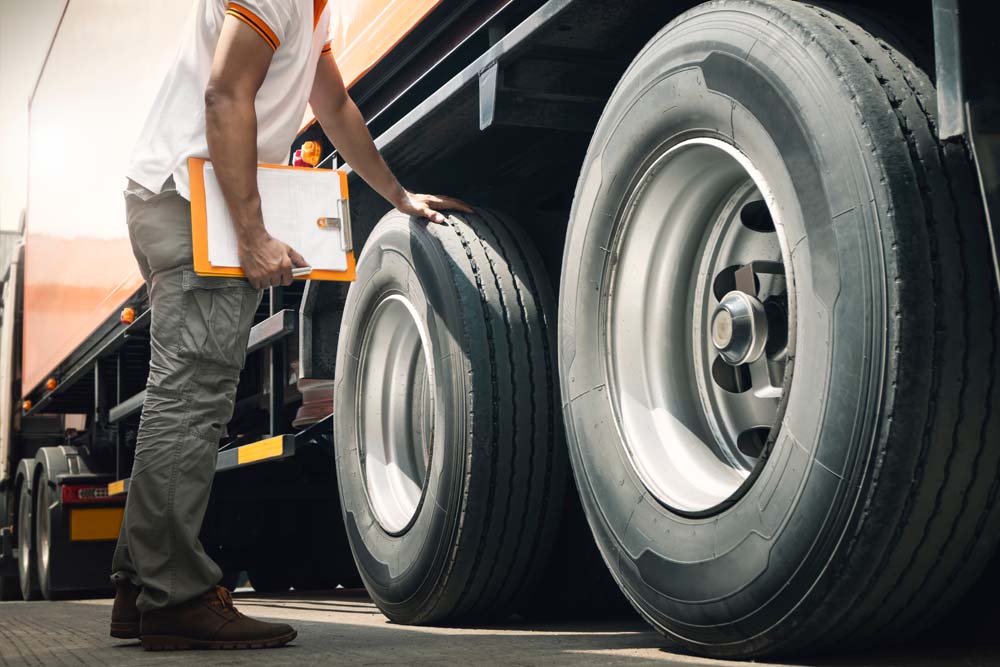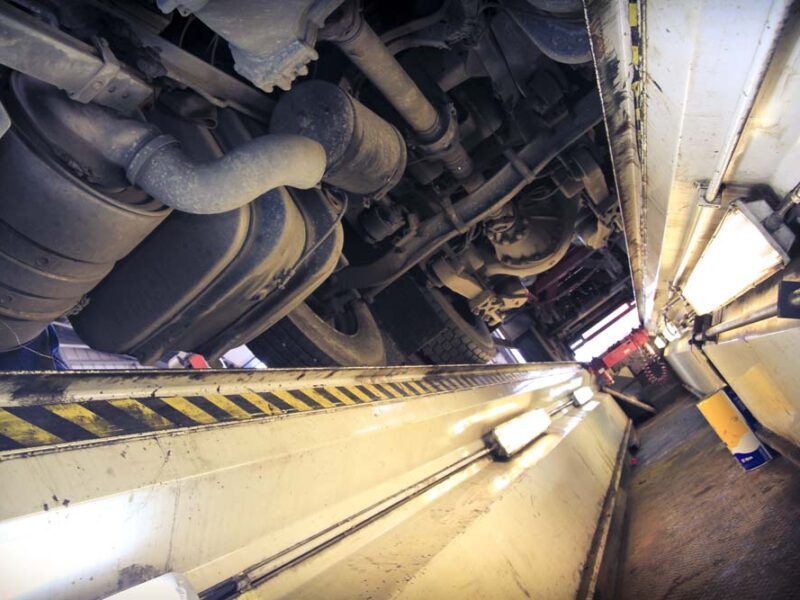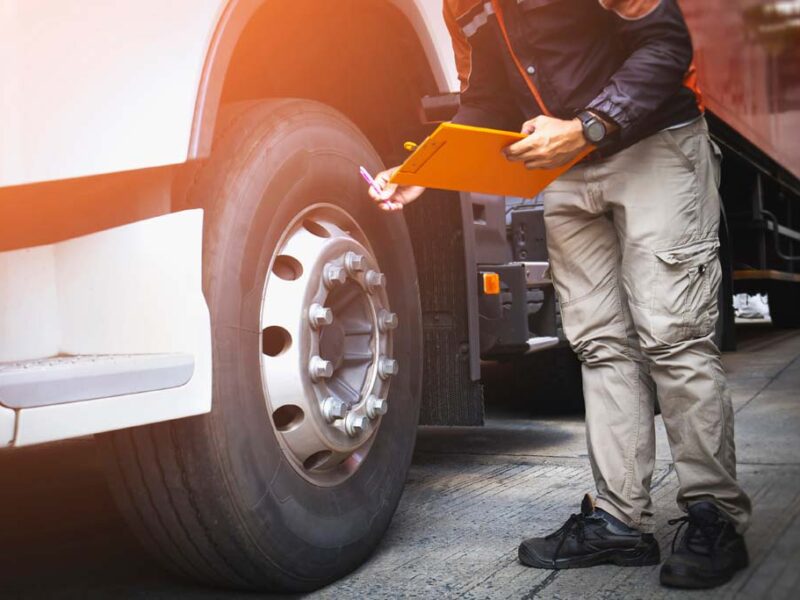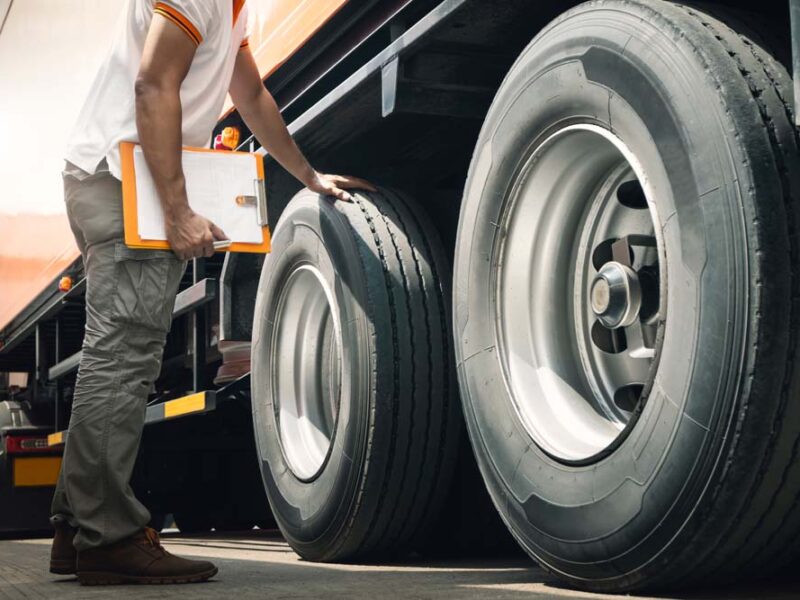Keeping the wheels turning. For many businesses in many sectors, this turn of phrase has a figurative meaning; for commercial vehicle operations, the meaning is literal: the success of any transport operation relies on the continued turning of wheels on vehicles on roads.
And given the importance of wheel-on-road, ensuring that those wheels turn safely is vital for every operator.
Wheel Losses - the frightening possibilities
There can be few more frightening accidents on the road than a commercial vehicle wheel-loss at speed - but they happen - and when they do, the outcomes can be serious. A wheel that has come off an articulated lorry travelling at around 50mph will continue to accelerate and may bounce several metres into the air, meaning that by its descent, it is capable of exerting a force equivalent to several tonnes on the next object it encounters. It takes little imagination to consider the effect this may have if that next object is another vehicle or worse, not an object at all, but a pedestrian or cyclist.
But to be clear - these are certainly not "imaginary" occurrences; they can and do happen. In one incident in May 2019 on the M6 near Leyland, the driver of a car that was hit by a flying loose lorry wheel was described as "the luckiest person in the world" when he escaped with only minor injuries. Photographs of the catastrophic resulting damage to his car show precisely why he was so-described; there is little doubt that had there been a passenger in the seat that was crushed by the tyre's impact - which tore through the vehicle's roof - the outcome would have been fatal. And for the avoidance of any doubt, there have certainly been fatal cases.
The operator of a vehicle involved in such an accident could reasonably expect the most forensic investigation into its maintenance procedures, with the threat of prosecutions for anyone found to be involved in any failing - mechanics, transport managers, directors and the driver. Corporate manslaughter and custodial sentences for company directors might even be on the cards in fatal cases, and then there is always the risk of expensive civil actions by injured parties.
Even stepping back from the most serious end of the spectrum and leaving aside the risk of a serious accident caused by wheel loss, incorrect wheel fixings can attract roadworthiness prohibitions or fixed penalties, which will have an effect on the operator's OCRS and increase the risk of further enforcement action and ultimately, a public inquiry and with it the threat of revocation of the O-licence.
There is no Mystery - The Science behind Wheel Loss
There was a time when wheel losses were thought to be something of a mystery, with the perceived wisdom being that they were random and inexplicable, caused by forces too complicated to understand, let alone try to mitigate. However, some years ago through its "Careless Torque Costs Lives" publication the DVSA sought to dispel the myth that every wheel loss was an unavoidable accident. The reality is that almost every wheel-loss incident that occurs could have been avoided, and in most cases, wheel losses are caused - whether directly or indirectly - by one or more people's failures.
There is a fair amount of science involved in understanding how and why wheels can come loose, and understanding the mechanics of it all is important in understanding how best to avoid it happening.
The fundamental cause of wheel loss is that the clamping forces between the wheel and the hub are not correct. A loss of clamping force can lead to movement where wheel and hub meet, which can itself cause wear and a loss of stud or bolt tension - all triggers for wheel fixings to loosen.
There are numerous reasons why clamping force may be reduced - but one way or another, they can usually be attributed to incorrect maintenance procedures somewhere along the line.
Most fundamentally, wheel fixings need to be correctly tightened to begin with. It is entirely logical that a loose wheel nut will contribute to a loose wheel - but it can be equally harmful to over-tighten a wheel fixing. Over-tightening can cause stretching of wheel studs, cause studs to be pulled through the hub or cause studs to fail as the material's elastic limit might be exceeded. Tightening should be to a specified torque in accordance with manufacturers' instructions, and should be measured using a calibrated torque wrench. Tightening in the proper sequence is also crucial.
The quality, correctness and even cleanliness of wheel components themselves can also ultimately lead to wheels loosening. Studs, nuts, spigots and washers - all the small components of wheel fixings - must be of the right specification, good quality (i.e. free of any corrosion, rust or wear), clean and properly lubricated. Lubrication, like wheel nut tightening can actually be overdone, because clamping force requires a certain level of friction.
Paint may also be an issue: any paint on the interfacing wheel fixings may soften when heated by braking, which again can cause a reduction in clamping force.
Wheel Security - What Operators Can Do
Wheel security should be viewed as a separate, distinct and vital part of an overall maintenance regime, and every operator should have a written wheel security policy in place, to be followed by any member of staff (or third party) who goes near the wheel of a vehicle - mechanics and drivers alike.
Driver Checks
On a daily basis, drivers are responsible for checking wheel fixings carefully as part of a walk around check. Wheel nut indicators are a helpful means of carrying out a visual check for any wheel nut movement, whilst drivers should also be looking carefully for any signs of damage, including cracked wheels, nuts or washers, elongation of stud holes or most fundamentally, evidence that the wheel is loose. It goes without saying that any wheel security defect reported by a driver should be rectified before the vehicle is allowed on the road.
Wheel Removal and Re-torquing Procedures
Where any wheel is removed from any vehicle (e.g. to change a tyre) and then re-attached, there should be documentary records - including a central wheel removal register which records not only the date that any wheel on any vehicle is removed, but provides details of any components or parts removed or replaced.
Separate to that, there should also be a written record confirming that the necessary re-torquing procedures have been followed each time a wheel is replaced - many operators favour "torque-tags", though these are not necessarily essential - what is important is that the correct re-torquing process is both carried out and recorded.
Upon fitting, the wheel fixings should be torqued to the correct tightness, with a torque wrench calibrated to the correct manufacturers' settings. But, crucially, each wheel should then be subject to a re-torque, to account for early relaxation of tension after initial tightening (more science involved here: wheel studs stretch when they are tightened, and a period of settlement thereafter, even in a stationary vehicle, will have the effect of reducing that stretch which in turn will reduce clamping forces). If a vehicle is stationary, it should be re-torqued after c. 30 minutes - whilst if the vehicle is used, it should be retorqued after between 40km and 80km of movement. Depending on which of these two applies, many manufacturers also recommend a further 24-hour re-torque.
Ensuring that the torque-wrench itself is properly calibrated is also essential - operators should always know when any torque wrench's calibration certificate will expire - an out of date calibration certificate may mean that the wrench is not performing as it should - whilst only staff who have been trained on using a torque-wrench (including setting it to the correct calibration and the importance of stopping the application of pressure once the setting has been reached) should be permitted to use them.
There is perhaps no better reminder for operators of the importance of getting wheel security right than the aptly-conceived title of the DVSA's publication on the subject: Careless Torque Costs Lives...
(c) Richard Pelly. Article first appeared in Croner-I. October 2021

More News and Insight

Social Media – Have you Thought about your Employees’ Use?
Social Media is all encompassing in the modern world, but although it brings many positives, it can place employers in vulnerable positions if their employees’ use is not carefully defined…

Changes to the Clandestine Entrant Civil Penalty Scheme means a Stitch in Time Really Does Save Nine!
The Clandestine Entrant Civil Penalty Scheme has been in place for over 20 years. It is designed to complement law enforcement activity against criminals who smuggle people into the UK illegally as well as deter those who decide to try to enter the country without permission…

Driving in the UK? Read about the latest Rule Changes in 2024
Earlier this year various new driving laws were introduced, impacting both standard road users as well as HGV and PSV road users across England, Wales & Scotland. If you are driving in the UK, especially if you are a commercial driver, then you should ensure that you are aware of these amendments and new rules…

Self-Driving Cars on UK Roads to be Reality by 2026
It seems that one of the first areas that will be breaking the ground in the AI revolution into most people’s everyday lives will be Self-Driving cars! Of course we have heard all this before, and more than once!

Are You Taking your Responsibilities to Maintain your Vehicles Seriously?
Running a haulage business is not an easy undertaking. There are a multitude of decisions to be made on a daily basis before any driver actually gets behind the wheel and delivers the goods (or passengers!).

Update to the Guide to Registering & Operating Local Bus Services in England & Wales
The Senior Traffic Commissioner’s guide to registering and operating local bus services in England and Wales is intended to help operators of local bus services understand the requirements for registering a service.

Changes to the HGV & PSV Test Regime for Earned Recognition Operators
In March 2021 the Government began a review into the processes for commercial vehicle testing to look at ways it could improve the regime for operators whilst still maintaining high safety standards for any vehicle used commercially on the UK’s roads.

Employment Law Updates for 2024
The Government has confirmed several legislative employment law changes to be implemented 2024, which aim to bring about a “fairer workplace for employees”.

Campaign to Bar Schools from using Section 19 Permits
In March 2024 a campaign was started to end the operation of minibuses by schools and colleges under Section 19 permits.

Moving to a Digital First Approach in Heavy Vehicle Testing
The DVSA has published an update to their digital transformation project for heavy vehicle testing. The update is for the new Manage Your Vehicle Testing (MyVT) digital service across vehicle testing.

Traffic Commissioner Highlights Abuse of Section-19 Permits
In a Section 19 Public Inquiry hearing heard last year (2023) the Traffic Commissioner highlighted again the importance of permit operators ensuring that their vehicles allow passengers and other road users to be safe.

Enero Logistics Ltd – the Law for Operators on Agency Drivers
At one time or another, many transport companies need to rely on the services provided by agency drivers, to best cope with sudden fluctuations in demand or to fill driver shortages. This allows for the undisrupted continuation of services by these organisations.
